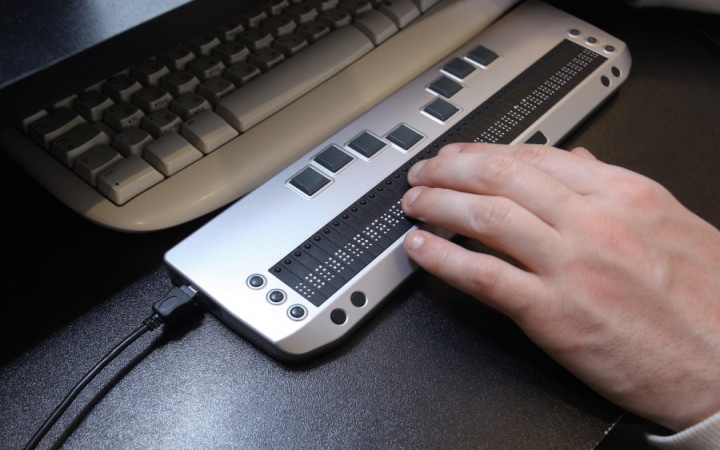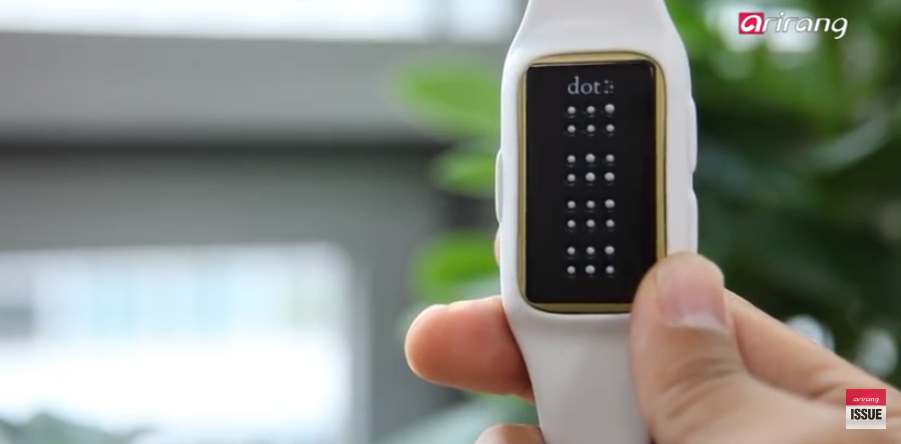Discover Ingenious Tools Designed for the Aesthetically Damaged
The development of ingenious tools for the aesthetically damaged represents a significant improvement in ease of access and freedom. Technologies such as smart glasses with AI capacities and mobile applications designed to supply acoustic descriptions are improving daily experiences for individuals.
Smart Glasses for Navigating

Smart glasses made for navigating are reinventing the way aesthetically damaged individuals interact with their setting. These sophisticated devices make use of a combination of camera modern technology, expert system, and acoustic feedback to give real-time info about environments. By employing barrier detection systems, clever glasses can inform users to possible hazards, making it possible for much safer flexibility in both familiar and strange settings.
The assimilation of GPS innovation better improves navigating capabilities, permitting users to get acoustic directions as they move. This hands-free approach not only cultivates self-reliance yet likewise encourages visually impaired people to browse metropolitan landscapes with raised confidence. Furthermore, many wise glasses are outfitted with features that determine spots and street indications, giving contextual information that improves the customer experience.
Moreover, the advancement of these tools is constantly advancing, with business working to enhance the precision of things recognition and expand the variety of navigational attributes. As clever glasses become much more obtainable and budget-friendly, they hold the prospective to substantially change day-to-day live for aesthetically damaged customers. Inevitably, these cutting-edge devices stand for a crucial step toward inclusivity, offering enhanced movement and a greater sense of autonomy for individuals navigating the world around them.

Mobile Apps for Daily Living
Exactly how can mobile applications boost the lives of aesthetically damaged people? Mobile apps are reinventing the means visually impaired individuals browse their environments, handle day-to-day jobs, and access info. These applications supply essential support with numerous capabilities, fostering self-reliance and enhancing lifestyle.
Numerous innovative mobile apps are developed particularly for day-to-day living. Applications like Be My Eyes connect visually damaged customers with sighted volunteers via video clip telephone calls, permitting them to obtain real-time aid with jobs such as reviewing tags or browsing unknown areas. Seeing AI, developed by Microsoft, uses artificial knowledge to explain surroundings, read message, and recognize items, efficiently transforming a smart device right into a powerful device for day-to-day support.
Additionally, navigating applications tailored for the aesthetically damaged, such as Aira and BlindSquare, provide audio-based directions and ecological information, enabling customers to traverse their surroundings securely and with confidence. Beyond navigating and instant assistance, mobile applications also sustain organization and job administration, with features that aid individuals set tips, create order of business, and track visits. In summary, mobile applications work as important resources, equipping visually impaired people to lead more independent and meeting lives.
Wearable Technologies for Help
Empowerment through innovation is increasingly obvious in the realm of wearable gadgets designed to help aesthetically impaired people. These innovative tools incorporate perfectly right into life, improving navigating and offering crucial comments to customers. For instance, wise glasses outfitted with video cameras can check out and identify faces message aloud, enabling customers to communicate more with confidence in social and expert setups.
One more noteworthy development is using haptic feedback systems in wearable gadgets. These systems make use of vibrations or other click here for info responsive signals to share details regarding the customer's atmosphere, such as challenges or changes in terrain, improving movement and security. Wearable innovations additionally consist of wristbands that link to smart devices, signaling customers to alerts with refined vibrations, therefore improving connectivity without reliance on aesthetic signs.
As these modern technologies proceed to progress, they are not just enhancing self-reliance for visually impaired people yet additionally promoting a higher sense of inclusion in culture. By linking the gap between challenges encountered in everyday living and the capacity for autonomy, wearable modern technologies act as essential tools in the quest for equal rights and empowerment for those with aesthetic impairments.
Sound Summary Tools
Sound summary devices play a critical role in improving accessibility for visually damaged people, offering them with the capability to involve with visual media. Braille displays and notetakers. These devices provide narrated descriptions of crucial aesthetic aspects in movies, television shows, and live efficiencies, making certain that users can fully comprehend the context and feelings conveyed through visuals
Sound summary can be integrated into different platforms, including streaming solutions, movie theater screenings, and live theater. Lots of popular streaming services currently include audio summary as an availability attribute, enabling viewers to pick it easily. Along with mainstream media, specialized applications also exist, providing audio descriptions for art events, museums, and other cultural events.
The performance of audio description pivots on the ability of the narrators, who his response need to convey visual details succinctly without detracting from the initial sound. Innovations in this field are additionally paving the way for more tailored experiences, where customers can readjust the level of detail and pacing according to their choices.
Braille Innovations and Instruments
Braille gadgets and technologies have dramatically transformed the method visually impaired individuals connect with text and info. Modern developments have brought about the advancement of functional devices that enhance proficiency and self-reliance among individuals. Especially, Braille display modern technologies have actually advanced, enabling for dynamic analysis experiences. These devices convert electronic text into Braille, enabling customers to access a huge range of information on mobile phones, computer systems, and tablets.
Furthermore, portable Braille notetakers integrate conventional Braille input with modern-day performances, promoting note-taking, organizing, and document editing and enhancing on the go. Voice-activated assistive devices. These compact tools frequently include text-to-speech capacities, connecting the gap between Braille and auditory info
On top of that, innovative Braille check printers have actually emerged, permitting individuals to generate Braille labels, papers, and educational materials efficiently. This accessibility cultivates better involvement in academic and professional atmospheres, ultimately advertising inclusivity.
Moreover, research right into wise Braille innovations continues to increase. Gadgets that incorporate fabricated knowledge are being explored to give real-time navigation assistance and contextual details, improving the user experience in varied settings. On the whole, these technologies show a commitment to empowering aesthetically impaired individuals through innovation, ensuring they can quickly access and involve with the world around them.

Conclusion
The innovation of ingenious devices for the visually damaged substantially enhances self-reliance and quality of life. These modern technologies not only foster better addition but also advertise autonomy in day-to-day activities, ultimately adding to a more equitable and available culture for visually impaired people.
As wise glasses come to be a lot more budget friendly and accessible, they hold the prospective to significantly transform day-to-day life for visually damaged individuals. Mobile apps are reinventing the means aesthetically impaired customers navigate their settings, manage everyday jobs, and gain access to details. Applications like Be My Eyes connect visually impaired individuals with sighted volunteers using video clip calls, enabling them to get real-time help with jobs such as reviewing tags or navigating unknown areas.Furthermore, navigating applications customized for the aesthetically damaged, such as Aira and BlindSquare, supply audio-based instructions and ecological details, enabling users to traverse their surroundings safely and confidently.The advancement of innovative tools for the visually impaired significantly enhances independence and quality of life.